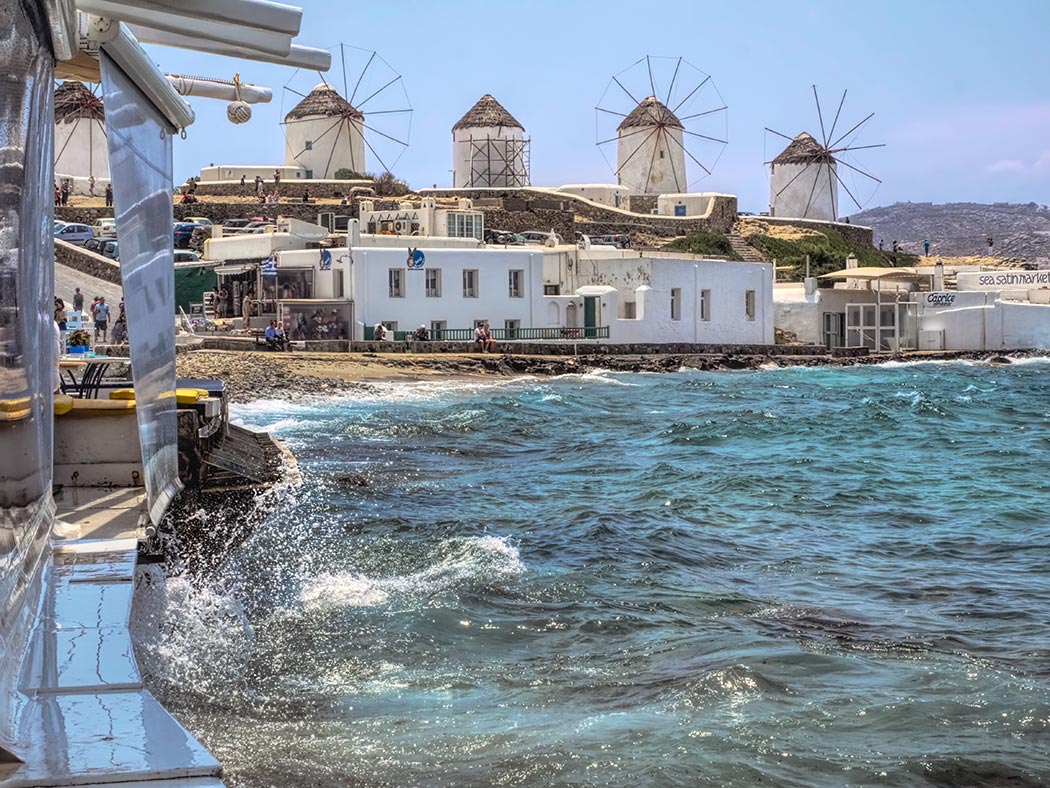I was more than a little puzzled when I first saw the Windmills of Kato Mili on the Greek island of Mykonos. This tiny speck of granite in the far eastern Mediterranean seemed an unlikely place to find windmills. Eager to know more, I climbed the low hill from the neighborhood of Little Venice to where five historic mills stood white against a robin’s egg blue sky. Although their heavy cotton sails have been removed, the structures are otherwise in excellent condition, right down to their conical thatched roofs.
I later learned that these five (six, if you count one that is missing its top) are only a small portion of the original windmills of Mykonos. The Kato Mili complex, originally consisting of 10 mills, was the largest grouping, but from the 16th century on, there were an estimated 28 mills scattered across the island. My first clue to why they were built on Mykonos came when I learned that the island had come under the direct rule of Venetians by the end of the 14th century. The Republic of Venice was a powerful maritime republic in northeastern Italy, and by the 16th century it was the dominant force in the eastern Mediterranean. Not only was Mykonos ideally located to re-provision Venetian ships, it was buffeted by strong northerly winds known as the meltemi. The Venetians constructed these wind-driven mills and put them to use grinding locally-grown wheat, barley, and corn, as well as cereal grains from around the Mediterranean and Black Sea. Though some of the milled flour was returned to local farmers, much of it went to local bakeries that produced “rusks,” a type of hard-tack bread that would keep for months at a time in the hold of a ship without spoiling.
The windmills of Mykonos made the island a mandatory stop for every seagoing vessel for the better part of 300 years, but the advent of electricity in the 19th century made them obsolete. By the middle of the 20th century they had ceased operating entirely. Today, 16 of the old windmills of Mykonos still stand. Most have been thoroughly renovated; some have even been turned into private houses. Boni’s Windmill, which stands at the top of Chora Town, is home to the Agricultural Museum of Mykonos. It is open daily between 4 p.m. and 8 p.m. during the summer months and is an excellent stop for anyone who wishes to know more about the mechanics of windmills and their history on Mykonos.
Author’s note: I was a guest of Collette during my visit to the island of Mykonos, Greece. However, the receipt and acceptance of complimentary items or services will never influence the content, topics, or posts in this blog. I write the truth, the whole truth, and nothing but the truth.

